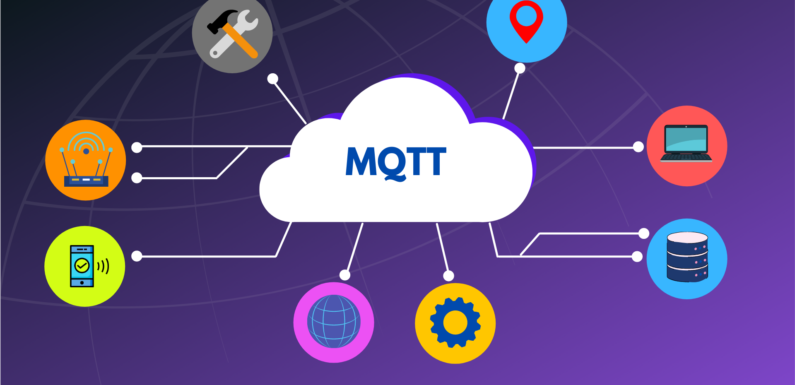
In the world of IoT, communication between devices is critical, and MQTT is one of the most popular messaging protocols used for this purpose. Quality of Service (QoS) is an essential aspect of MQTT that guarantees message delivery between the broker and client. MQTT QoS levels define the reliability of message delivery and network traffic management between the client and broker. In this blog, we will examine MQTT Quality of Service (QoS) levels in-depth and explore how they can be used in IoT applications. We will also look at how Azure IoT hub supports MQTT QoS levels.
Understanding MQTT Quality of Service (QoS) Levels:
Quality of Service (QoS) is a measure of how reliably the broker delivers messages to clients. MQTT supports three QoS levels: At Most Once (QoS 0), At Least Once (QoS 1), and Exactly Once (QoS 2).
QoS 0 is the lowest level of QoS in MQTT. It provides the most basic level of message delivery guarantee. In this level, the broker delivers the message to the client at most once. There is no guarantee of message delivery, and the client may not receive the message. QoS 0 is appropriate for use cases where message loss is not critical, and where network bandwidth is limited.
QoS 1 is a higher level of QoS in MQTT. It guarantees message delivery at least once. In this level, the broker delivers the message to the client until it receives an acknowledgment from the client. If the client does not acknowledge the message, the broker resends the message until it receives an acknowledgment. QoS 1 is appropriate for use cases where message loss is unacceptable, but there is a possibility of message duplication.
QoS 2 is the highest level of QoS in MQTT.
MQTT QoS 0: At Most Once:
QoS 0 provides the most basic level of message delivery guarantee in MQTT. In this level, the broker delivers the message to the client at most once, and there is no guarantee of message delivery. This level is appropriate for use cases where message loss is not critical, and where network bandwidth is limited.
One scenario where QoS 0 can be used is in low-bandwidth environments. In these environments, network bandwidth is limited, and data transmission is slow. Using QoS 0 ensures that the message is transmitted only once, and no unnecessary network traffic is generated.
MQTT QoS 1: At Least Once:
QoS 1 guarantees message delivery at least once in MQTT. In this level, the broker delivers the message to the client until it receives an acknowledgment from the client. If the client does not acknowledge the message, the broker resends the message until it receives an acknowledgment. QoS 1 is appropriate for use cases where message loss is unacceptable, but there is a possibility of message duplication.
One scenario where QoS 1 can be used is in industrial automation. In this use case, it is crucial to ensure that all messages are delivered without loss, but message duplication is acceptable as long as the message is not processed twice.
Azure IoT hub supports MQTT QoS 1. It allows IoT devices to send telemetry data to the cloud using QoS 1, providing a reliable connection between the device and the cloud.
MQTT QoS 2: Exactly Once:
QoS 2 provides exactly once message delivery guarantee in MQTT. In this level, the broker and client engage in a two-way handshake to ensure that the message is delivered exactly once. QoS 2 is appropriate for use cases where message loss or duplication is unacceptable, but network bandwidth is not limited.
One scenario where QoS 2 can be used is in financial trading. In this use case, it is essential to ensure that all messages are delivered exactly once, without loss or duplication. Using QoS 2 ensures that the financial transactions are processed accurately and in real-time.
Azure IoT hub also supports MQTT QoS 2. It allows IoT devices to send telemetry data to the cloud using QoS 2, providing a reliable connection between the device and the cloud.
Conclusion:
MQTT Quality of Service (QoS) levels are essential for reliable message delivery between the broker and the client in IoT applications. MQTT supports three QoS levels: QoS 0, QoS 1, and QoS 2, each providing a different level of message delivery guarantee. QoS 0 provides at most once delivery, QoS 1 provides at least once delivery, and QoS 2 provides exactly once delivery.
Choosing the appropriate QoS level depends on the specific use case and the requirements for message delivery guarantee. Azure IoT hub supports all MQTT QoS levels, enabling reliable communication between IoT devices and the cloud.
FAQs:
Q: What happens if an MQTT client disconnects before receiving an acknowledgment for a QoS 1 or QoS 2 message?
In this case, the broker will store the message and resend it when the client reconnects. For QoS 2 messages, the broker will resend the message until it receives an acknowledgment.
Q: During transmission, can a message be downgraded from QoS 2 to QoS 1 or QoS 0?
No, once a message is published with a specific QoS level, it cannot be downgraded during transmission.
Q: What is the maximum number of retries for QoS 1 and QoS 2 messages?
The number of retries is not fixed and depends on the implementation of the MQTT broker and client.
Q: Does MQTT QoS guarantee the order of message delivery?
No, MQTT QoS does not guarantee the order of message delivery. In a scenario where multiple messages are being transmitted simultaneously, the order of message delivery may not be maintained.
Q: Is MQTT the only protocol that supports QoS levels for message delivery?
No, other messaging protocols, such as AMQP and CoAP, also support QoS levels for message delivery.

